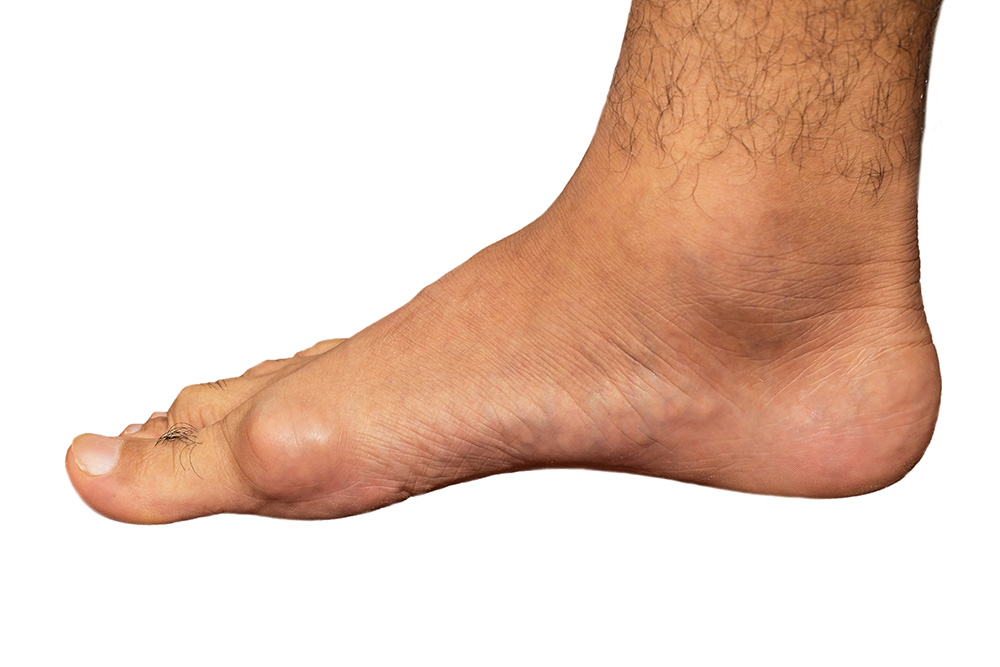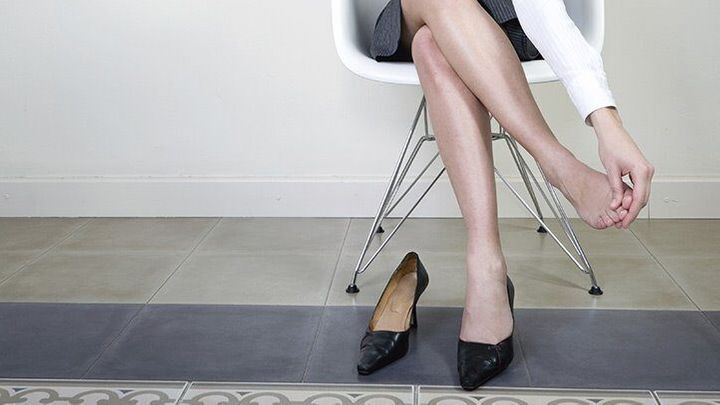Yes, tight shoes can cause gout. Gout is a form of arthritis that occurs when uric acid builds up in the body. Uric acid is a waste product that is produced when the body breaks down purines.
Purines are found in many foods, including meat, poultry, and seafood. When uric acid levels become too high, it can form crystals in the joints, causing pain and inflammation. Tight shoes can exacerbate this problem by putting pressure on the joints and preventing movement.
If you’re someone who suffers from gout, you know that it can be a painful condition. And, if you’re someone who likes to wear tight shoes, you may be wondering if they could be contributing to your problem.
Here’s the thing: while tight shoes might not be the *only* factor that can lead to gout (other things like genetics and diet play a role), they can certainly contribute to the condition.
That’s because when your feet are constricted in tight shoes, it restricts blood flow and encourages inflammation. And we know that both of those things can trigger a gout attack.
So, if you want to help keep your gout under control, make sure to give your feet some breathing room by wearing comfortable, supportive shoes.
It’ll make a world of difference for your overall health – and your peace of mind!
10 Minute Gout Cure
Gout is a painful and potentially debilitating condition that affects millions of people worldwide. While there is no cure for gout, there are many effective treatments available that can help to control the symptoms and prevent further damage to the joints. One such treatment is the 10 Minute Gout Cure, which is a simple and easy to follow program that can provide relief from gout pain in as little as 10 minutes.
The 10 Minute Gout Cure is based on the premise that gout is caused by high levels of uric acid in the blood. Uric acid is a natural substance that is produced when the body breaks down purines (a type of protein). When uric acid levels become too high, it can form crystals in the joints which cause inflammation and pain.
The 10 Minute Gout Cure works by helping to lower uric acid levels in the blood, thus reducing or eliminating the formation of these crystals.
The program includes a detailed diet plan that helps to identify and avoid foods that are high in purines (such as red meat, alcohol, and seafood). It also provides specific guidelines on what types of foods should be eaten more frequently in order to lower uric acid levels (such as fruits, vegetables, whole grains).
In addition to dietary changes, the program also recommends certain supplements and lifestyle changes (such as weight loss) that can further help to reduce uric acid levels and prevent gout attacks.
While there is no guarantee that everyone who follows this program will experience complete relief from their gout symptoms, many users have reported significant improvements after just a few days or weeks. For those suffering from chronic or recurrent gout, the 10 Minute Gout Cure may provide much-needed relief from this painful condition.

Credit: www.familyfootwearcenter.com
Can Footwear Affect Gout?
Gout is a form of arthritis that can cause severe pain and swelling in the joints. It most commonly affects the big toe, but it can also affect other joints such as the ankles, knees, elbows, wrists and fingers.
Footwear can definitely affect gout.
Wearing shoes that are tight or don’t fit well can put pressure on the joints and irritate the skin, which can make gout symptoms worse. High-heeled shoes can also be problematic because they increase the risk of falling and injuring the joints. If you have gout, it’s important to wear comfortable shoes that fit well and provide good support.
What Triggers Gout Flare-Up?
Gout is a type of arthritis that results from the buildup of uric acid in the body. Uric acid is a byproduct of the breakdown of purines, which are found in certain foods and drinks. When uric acid levels become too high, it can form crystals in the joints, resulting in inflammation and pain.
Gout flare-ups can be triggered by many different things, including:
– Alcohol: Drinking alcohol can increase the level of uric acid in the blood.
– Certain foods: Foods high in purines, such as red meat and seafood, can trigger gout flare-ups.
– Stress: Stress can lead to increased levels of uric acid in the blood.
– Weather changes: Cold weather or sudden changes in temperature can cause gout flare-ups.
What is the Fastest Way to Get Rid of Gout?
Gout is a type of arthritis that can be extremely painful. The symptoms include sudden, severe attacks of pain, swelling, redness and tenderness in the joints. If you are suffering from gout, you may be wondering what the fastest way to get rid of it is.
There are a few things that you can do to help ease the pain and swelling associated with gout. First, try to rest the joint that is affected. This will help to reduce inflammation.
You can also apply ice to the affected area for 20 minutes at a time, several times a day. This will help to numb the pain and reduce swelling.
If over-the-counter medication doesn’t provide relief, your doctor may prescribe stronger medication or give you injections of corticosteroids directly into the affected joint.
These treatments can provide relief within 24 hours. In some cases, surgery may be necessary to remove damaged tissue or correct a problem with the way your joints are aligned.
If you have gout, it’s important to take steps to prevent future attacks by avoiding foods that trigger gout (such as alcohol, red meat, organ meats and seafood) and maintaining a healthy weight.
Drinking plenty of fluids (especially water) and getting regular exercise can also help prevent gout attacks from occurring.
Should I Stretch My Foot With Gout?
The short answer to this question is “no.” Stretching your foot with gout can actually make your condition worse.
Gout is a form of arthritis that occurs when uric acid crystals build up in the joints, causing inflammation and pain.
The big toe is the most common joint affected by gout, but it can also occur in the ankles, knees, wrists and elbows.
Stretching your foot with gout can actually aggravate the condition because it puts pressure on the already-inflamed joint. It’s important to rest the joint as much as possible and avoid any activities that put stress on it.
If you must move your foot, do so carefully and slowly to avoid further irritation.
If you’re experiencing pain from gout, over-the-counter medications like ibuprofen or naproxen can help reduce inflammation. You can also apply ice to the affected joint for 20 minutes at a time several times a day.
And be sure to drink plenty of fluids – water is best – as dehydration can worsen gout symptoms.
What Causes Little Toe Pain and How Is It Treated?
Conclusion
If you’re suffering from gout, you might be wondering if your shoes could be to blame. While there’s no definitive answer, tight shoes can certainly contribute to the condition. Gout is caused by high levels of uric acid in the blood, which can lead to the formation of crystals in the joints.
This can cause severe pain and inflammation. Tight shoes can put pressure on the joints and exacerbate the pain of gout. If you suspect that your shoes are contributing to your gout, try wearing loose-fitting footwear or going barefoot as much as possible.
You should also talk to your doctor about medication to help control the level of uric acid in your blood.

Leave a Reply